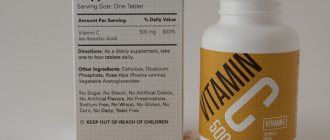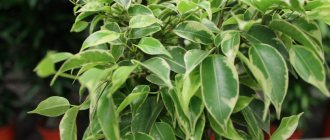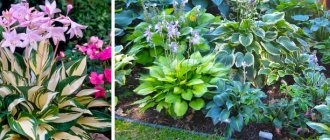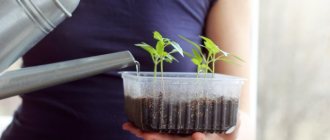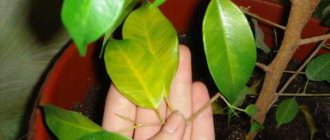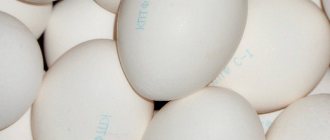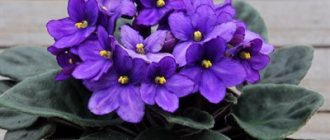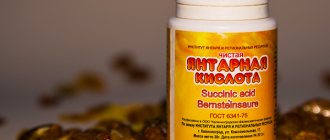Benefits of Banana Peel Fertilizer
Experienced gardeners know that fruit is a real storehouse of micro- and macroelements that are beneficial for plants.
- The dried peel of a ripe banana contains more than 12% minerals. Moreover, the majority – 10% – is potassium. The remaining 2% is magnesium and calcium. In addition, banana peels contain 2% sulfur and some phosphorus. Therefore, there is no point in arguing about the effectiveness of using banana waste as a top dressing - it is useful.
- Banana fertilizers speed up the process of leaf and bud formation.
- Thanks to the high potassium content, they promote winter hardiness of plants.
- In addition, the aroma and shelf life of fruits and vegetables can be significantly increased by fertilizing during the growing season with various infusions based on banana peels.
- Banana fertilizers are especially effective for vegetable plants with a high need for potassium. And not only for tomatoes, potatoes and parsnips, but also for cucumbers, carrots and even pumpkins.
What flowers love banana fertilizer?
Fertilizer from tropical fruit residues is effective for almost all indoor flower crops. They love nutritious feeding of Saintpaulia, miniature roses, peonies, and cyclamens. It will be useful for violets, ferns, orchids, as well as for various flowering indoor plants. To ensure abundant and colorful flowering, it is recommended to fertilize them at the budding stage.
Harmful effects of banana peel fertilizer
But there is also a dark side. Firstly, one cannot ignore the consequences of chemical decomposition processes for indoor plants. The fact is that bacteria caused by rotting can have a negative impact on the development of the root system. For example, root rot damage in 70% of 100% leads to the death of the plant.
Secondly, we must not forget that the skin of industrially grown fruits and vegetables absorbs a huge amount of chemicals used to treat the plantation. The consequences of introducing such peels into the ground are unpredictable. For example, targeted chemical fungicides suppress not only pathogens, but also vegetation processes. This is especially noticeable during the budding phase of flowering plants. The number and size of buds may be significantly smaller than usual. Therefore, for infusions and mixtures, it is better to use eco-products purchased in a specialty store or grown at home (you can find out how to grow a banana at home from our article).
The benefits and disadvantages of fertilizing
The peel successfully replaces such industrial potassium-phosphorus fertilizers as humic concentrates. The main advantages of this method are:
- versatility (can be used for any type of flower);
- ability to compensate for lack of lighting;
- stimulation of bud formation;
- extension of the flowering period;
- the color of the flowers becomes brighter;
- accelerating the development of young plants;
- effectiveness in the fight against aphids;
- microelements contained in chelated form have a quick and long-lasting positive effect.
But there are also negative aspects to using such fertilizer:
- fresh peels that are not covered with soil become moldy and smell unpleasant;
- sweet fertilizer can attract ants and other insects;
- infusions and decoctions emit a specific aroma.
Banana peel infusion
The safest way is to prepare an infusion based on dried peels. In addition to the fact that some of the chemicals are removed in this way, dried bananas can be used throughout the year. Just do not store the workpiece in closed glass jars. To prevent mold from appearing, it is better to store fertilizer in paper envelopes.
- Cut the raw materials into small pieces.
- Lay out on paper and put in a cool, dark place until completely dry. Of course, you can finish banana peels in the oven.
- Boil 100 grams of raw material in a liter of water. Let the broth brew for 12 hours.
- How to use: strain the resulting mixture and dilute with water at room temperature in a ratio of 1:5.
Methods for preparing fertilizers and instructions for their use
Banana peel fertilizer can be prepared in a variety of ways. However, the properties of such mixtures differ and have their own limited time frame for use.
Roasted skin powder
This type of fertilizer is applied to the soil in dry form. Preparation of the product will take some time and is advisable when used on a small number of plants.
Cooking method:
- The banana must be thoroughly washed with hot water and the peel removed.
- The peel needs to be wiped dry and spread on a baking sheet.
- The oven needs to be preheated to 180°C and a baking sheet with the peel placed in it (it can be pre-chopped into fragments of 2 - 4 cm).
- You need to keep it in the oven until the banana peel is completely dry (it will turn black and shrink in size).
- After drying, the fragments should be ground in a coffee grinder and stored in a glass container with a tightly closed lid.
This fertilizer is used to enrich the soil. It is scattered in a thin layer under the plant and the soil is loosened. It is recommended to mix it with soil mixture when transplanting plants or picking seedlings.
Compost
The easiest way to use banana peels is used by summer residents who have special compost pits. They throw 10-20 pieces there in early spring. skins and use humus to fertilize the land in the fall.
Infusion for flowers
The use of infusion for watering house plants is considered the most optimal option, which preserves most of the organic compounds in the peel. The disadvantage of this fertilizer is the short shelf life of the product (about 5-7 days). Therefore, the infusion is prepared from 2-3 skins per week of use.
How to prepare banana peel infusion:
- Clean and dried skins must be cut in half and placed in the bottom of a clean liter jar.
- The raw materials must be filled with water at room temperature to the top of the jar. Close it and leave in a dark, warm place for 2-3 days.
- Before watering, the mixture must be diluted with water in a 1:1 ratio.
The liquid in the jar will become cloudy and take on a sweet banana smell. Fermentation may occur (depending on the temperature at which infusion is carried out). It is recommended to water the plants with infusion 2 times a week.
Mixture of soil + banana peel
To prepare the fertilizer you will need a lot of time and a large (10 liter) bucket that closes tightly.
You can also make a compost mixture for home use:
- Clean and dry banana skins should be cut into 3-5 cm pieces.
- In a 10 liter bucket you need to collect rich black soil and mix it with 5-10 skins.
- It is recommended to pour 100 g of Baikal on top of the mixture and, tightly closing the lid, leave for 3-6 weeks in a warm place (the temperature should be more than 18 ° C).
- Then the procedure must be repeated: reintroduce the peel and “Baikal” into the bucket. Leave to ferment for another 5 weeks. After this period, the compost is ready.
The mixture is added to pots of indoor plants and mixed while loosening. The use of compost is especially effective when replanting plants, then it is added to the soil composition.
When composing the mixture, it must be taken into account that excess fresh compost can damage the root system of plants. It is added in proportions of 1:3 (1 part compost and 3 parts soil).
Tropical cocktail
This type of feeding refers to complex mixtures that require a long preparation process.
To create fertilizer you will need:
- banana peel – 8 – 10 pcs.;
- water – 1 tbsp.;
- sugar – 250 g;
- dry yeast – 0.5 tsp;
Place the peel and bulk ingredients in a glass jar with a capacity of 1 liter, then pour a glass of filtered warm water on top. The jar needs to be closed with a lid and fermented in a warm place for 7 days. Then you need to strain the solution through two layers of gauze and leave to infuse in a dark place for 2 months.
After fermentation is complete, you will get a strong nutritional concentrate. For watering it needs to be diluted with water 1:10, and for foliar feeding 1:20. After the end of the fermentation cycle, the jar must be stored in the refrigerator.
Foliar feeding
Foliar feeding is popular among gardeners. This allows you to moisten the leaf surface and deliver microelements directly to the green mass of the plant. For this type of fertilizer, the concentration of the solution must be very weak so as not to damage the leaf blade.
What is the leaf nutrient mixture prepared from:
- banana peel – 3 pcs.;
- egg shells – 3 pcs.;
- magnesium sulfate – 20 g;
- water – 1.5 l.
Before preparing the mixture, you need to prepare the eggshells: rinse with soda and dry.
Cooking process:
- Banana peels need to be pureed using a blender, and eggshells can be ground with a coffee grinder.
- You need to put the mixture in a glass container (1 l) and pour magnesium sulfate into it.
- Fill the jar with filtered water to the top of the container, close the lid and shake.
The solution will be ready for use after 3 hours. This is a concentrate that needs to be diluted for leaf feeding in a ratio of 1:2. Before preparing the working solution, the liquid must be filtered through cheesecloth. It is recommended to store the jar of concentrate in the refrigerator. Foliar watering should be done by spraying liquid once a week.
Banana decoction
When preparing such a fertilizer, the amino acids will be destroyed as a result of heat treatment, but the vitamins and microelements will be included in the decoction. The boiling process will destroy all pathogens, which will allow the broth to be stored in the refrigerator for a long time.
To prepare, boil 3-4 banana peels in 1 liter of water for 10 minutes. Then the liquid must be cooled and strained through cheesecloth. This will be a mother solution (concentrate), which must be diluted in half with water before watering. It must be stored in the refrigerator.
Banana and citrus mixture
Other fruits – oranges, lemons – are also growth stimulants.
For example, to create a cocktail of tropical fruits for repeated use when watering, you need:
- banana peel – 3 pcs.;
- orange peel – 3 pcs.;
- sugar – 1 tbsp;
- water – 3 l.
To prepare the fertilizer, you will need a glass jar with a capacity of 3 liters that closes tightly. Preparation time – 1 month.
Cooking process:
- At the bottom of a clean jar (it is recommended to wash it with baking soda, rather than using household chemicals), you need to place fruit peels.
- It is necessary to pour filtered water into the jar and dissolve the sugar in it, stirring.
- Then you need to close the jar with a lid and put it in a dark but warm place for 1 month.
- After the expiration date, the liquid must be filtered through 3 layers of gauze. It is a concentrate that must be dissolved 1:10, then start watering.
It is recommended to store the jar of solution in the refrigerator and dilute it with warm water before watering. Water the plants once every 14 days.
Nourishing Green Tea & Banana Blend
Green tea contains trace elements and tannins that stimulate the development of the root system of flowers and seedlings. The combination of nutritional amino acids from banana and tannins from green tea allows you to create an effective fertilizer for any season.
For irrigation, decoctions of tea and banana peels are used (the process of preparing the decoction is described above in the article). You need to brew 2 tbsp. green tea without impurities in 300 ml of water. The tea needs to be steeped for 2 - 3 hours and strained from the brew.
In a glass container you need to mix 1:1 tea and a decoction of banana peels - this is a concentrate that must be diluted 1:1 with water before watering.
Nettle and banana mixture
To prepare the fertilizer, you will need to combine 2 infusions: from banana peel (the preparation method is described above in the article) and nettle. To prepare the infusion, pharmaceutical herbs in packages are suitable.
In a 500 ml container, pour boiling water over the nettle raw material, cover with a lid and leave for 24 hours. Then the liquid must be filtered and mixed with banana infusion. Fertilizer should be stored in the refrigerator.
It is recommended to water indoor plants once every 2 weeks. To do this, you need to mix 100 ml of infusion with 300 ml of filtered water. You can use it to water “sheet by sheet”, but then you need to dilute the mother liquor in 500 ml of water.
Mixture of banana and grape branches
Banana peel is high in nutrients, and grape branches contain a range of vitamins and microelements. In order not to destroy the beneficial properties by heat treatment, flower growers recommend enriching the soil with a dry mixture of grapevine and banana peel before planting or replanting indoor flowers.
Dry grape branches for preparing fertilizer
The nutrient mixture is combined with the substrate (2 tablespoons of the mixture are used per 3 liter pot) and poured into a flowerpot or seedling glass. Dry grape branches need to be crushed in a coffee grinder and combined with banana peel powder (1:1). The fertilizer should be stored in a dry place, wrapped in craft paper.
Banana peels for large leaf plants
In order to fertilize large-leafed ornamental plants, it is enough to wipe the leaf blades with freshly peeled banana peels twice a week. It is better to do this after sunset. The rest of the time there is a risk of getting burned by the leaves or a chemical reaction negative for the plant.
In this way, you can not only nourish the flower with the necessary substances, but also add shine to the leaf blade. In addition, the pulp will protect the surface of the leaf from dust and excess moisture for some time.
Powder form
Banana powder can be produced to be used as fertilizer.
The cut peel is washed. Then it is dried. There are several drying methods:
- You can use a food dehydrator to dry the skins (dry for 8-10 hours at 70°C).
- You can place the skins on a baking sheet lined with parchment paper and bake in the oven (at a very low temperature) for about 8-10 hours. However, this method is not economical.
- You can simply let the peel dry in the sun.
After drying, it should be crushed in a convenient way:
- crush in a mortar;
- grate;
- grind finely in a coffee grinder.
The resulting banana powder can be used in different ways:
- The powder can be mixed with soil for planting potted flowers (1 teaspoon of fertilizer per pot).
- The powder can be mixed with the top layer of soil in a pot (1-2 teaspoons are added once a month).
- You can mix the powder with water and set it aside for several days, then water the plants with the resulting solution.
Application into the soil
If you are sure that unwanted chemicals will not get into the soil of your garden along with banana peels, apply fertilizer 2 times a week. Of course, for each individual plant there are individual proportions. The universal dose is 100 grams per root.
In order for the peel to quickly decompose in the soil, be sure to grind the raw materials before applying. It is better to dig in the root zone at a distance of at least 5 cm from the trunk. The approximate depth is 10 cm. This should be done as carefully as possible so as not to damage the root ball.
Precautionary measures
Banana peel fertilizer has a high nutritional activity, so you should not use it frequently. Each type of feeding has its own time intervals. If you add a lot of nutrients at once, this can lead to accelerated development of green mass or root system, which the plant cannot cope with and may die.
All fertilizing with banana fertilizers should be alternated with watering with filtered water. The application of other organic or mineral fertilizers during this period is not recommended.
Before preparing fertilizer according to any of the recipes, you should thoroughly rinse the banana peel under running water. For these purposes, use soft brushes, such as a toothbrush.
All liquids containing banana peels consist of a large amount of proteins; to avoid rotting and fermentation, solutions must be stored in the refrigerator. But you should not use chilled fertilizers for applying to flower pots. They must be diluted with warm, clean water to bring the overall temperature of the solution to room temperature.
Nutrient fertilizers with banana peel are suitable for both indoor flowers and seedlings. You can buy bananas in supermarkets all year round, so solutions can be prepared for young seedlings of cucumbers and tomatoes, peppers and eggplants in early spring. Flowers always respond to fertilizing with lush and long-lasting blooms, regardless of the season.
Banana peel compost mixture
The compost mixture recipe is considered one of the most effective home recipes. But you should remember the danger of overdose. Here, as in all other cases, individual recommendations are important. For example, banana compost gives excellent results when transplanting roses. But it is not only completely useless, but also harmful to flowers that “don’t like” potassium. Another disadvantage is the characteristic, rather unpleasant smell. Therefore, the preparation and use of compost is more appropriate for the vegetable garden and garden, in a private home. Recipe for making banana peel dressing:
- To prepare the fertilizer, mix chernozem (5 kg), banana peelings (10 pcs.) and the preparation for improving soil quality “Baikal EM-1 (50 g).
- Leave the mixture in a warm place for at least two weeks.
- After this time, repeat the procedure completely, adding the same amount of ingredients to the compost container.
The fermentation process depends on the quality of the raw materials. Fermentation can last more than a month. Before application, the mixture is diluted with earth at the rate of 1:4.
Top dressing for roses
A popular tip is to bury banana skins under roses. However, this trick can be harmful because the banana can become a source of harmful pathogens that promote the development of fungal diseases. In order for potassium from the peel to get into the substrate, it must first decompose, which requires nitrogen from the soil. Therefore, it is better to use infusions. Nevertheless, flower growers respond very positively to feeding roses with banana infusions; roses begin to bloom more abundantly and longer.
What plants benefit from banana peel fertilizers?
Banana fertilizer is suitable for both flowers and vegetable crops. But, first of all, these are plants with a high need for potassium. For example,
- for roses – potassium will strengthen the immune system; increasing frost resistance, it will make wintering easier; protects against pests;
- for orchids – will increase the number of buds and the duration of flowering;
- for geranium and fuchsia - phosphorus in banana fertilizer helps to increase the number of buds and the size of flowers.
Also, fertilizing with banana peels has a good effect on the formation of fruits and vegetables. List of items requiring potassium and phosphorus:
- eggplants,
- bell pepper,
- cabbage,
- carrot,
- cucumbers,
- beets, etc.
Flaws
Despite the many positive aspects of banana feeding, there are also negative ones. Bananas are imported from distant regions and treated with chemicals for preservation: ammonium sulfate, chlorine, and hormonal agents. If in small dosages these components have a positive effect on plant growth, then excess inevitably causes harm. Another disadvantage is that it is impossible to fully compensate for the lack of useful elements using banana peels alone. It is necessary to additionally apply ready-made fertilizers.
One point that should not be ignored is the presence of papains in the biochemical composition of banana skins. These substances can destroy weakened roots. It is not recommended to lay raw skins on top of the ground or dig them in to a depth of 5–6 cm. It is better to lay them on the bottom and then plant a flower. Until the roots begin to actively grow, the peel will have time to rot and will not be able to cause harm. You should also not use unwashed raw materials for fertilizer.
For fertilizer
For indoor flowers with individual needs, an infusion of banana peels is used as a fertilizer, with the addition of other components.
Compound
- banana skins – 3 pcs.;
- onion peel;
- garlic peel;
- dry nettle.
Preparation
- Place banana peel and a handful of dry ingredients in a 3-quart jar.
- Fill with purified water.
- Leave it on the window so that the sun's rays enter.
- Leave for 4 days.
- Strain.
- Dilute with water 1:1.
A good top dressing would be an infusion of banana peels for flowers that are in the process of growing or have already grown.
Infusion recipe for watering
An infusion of banana peels is prepared for watering flowers without much difficulty.
Compound
- banana skins – 3 pcs.;
- purified water.
Preparation
- Place the skins in a 3-liter jar.
- Fill with purified water.
- Leave for 2 days.
- It is advisable to strain.
- Dilute with water 1:1.
The classic infusion of banana peels for irrigation is used in the same way for greenhouse crops.
